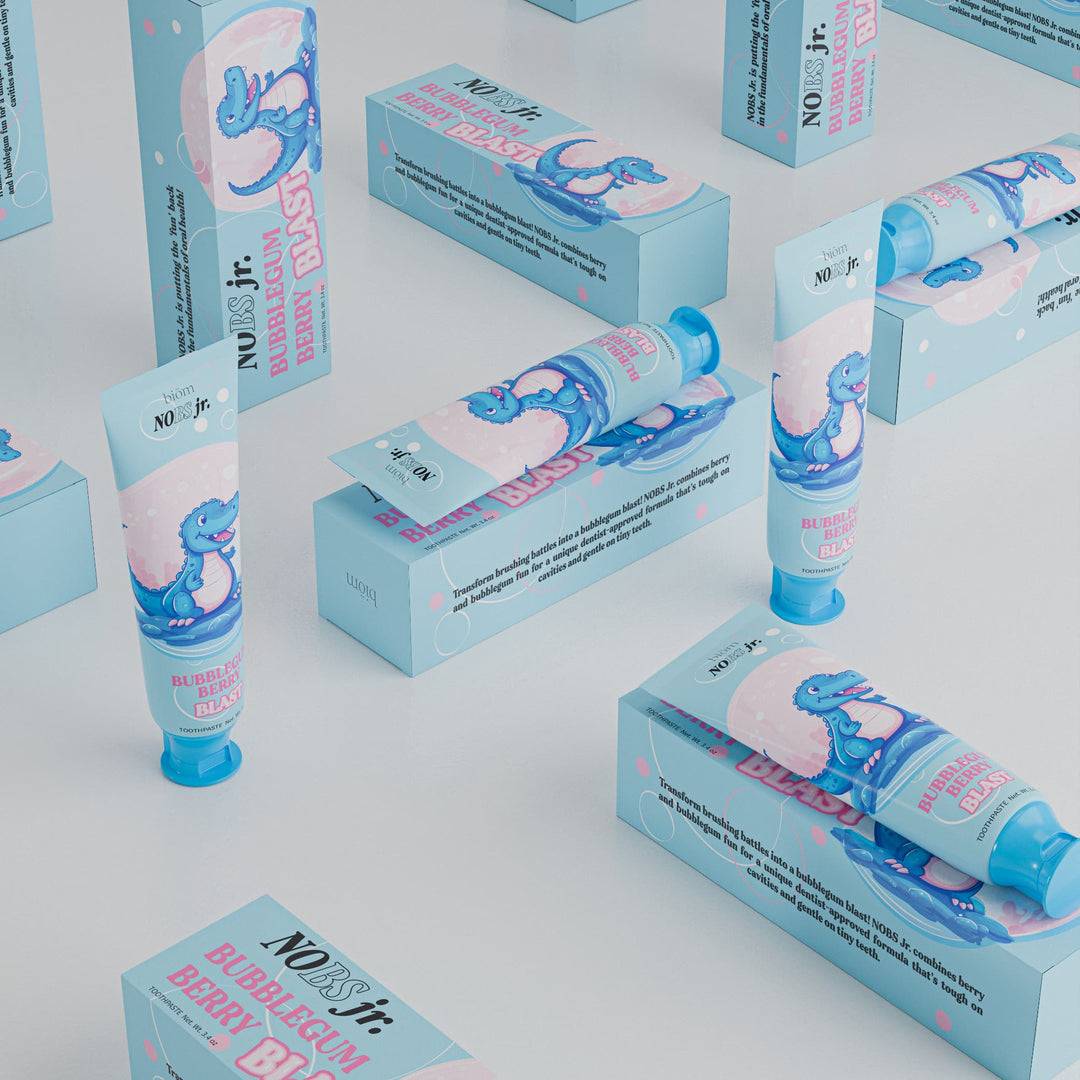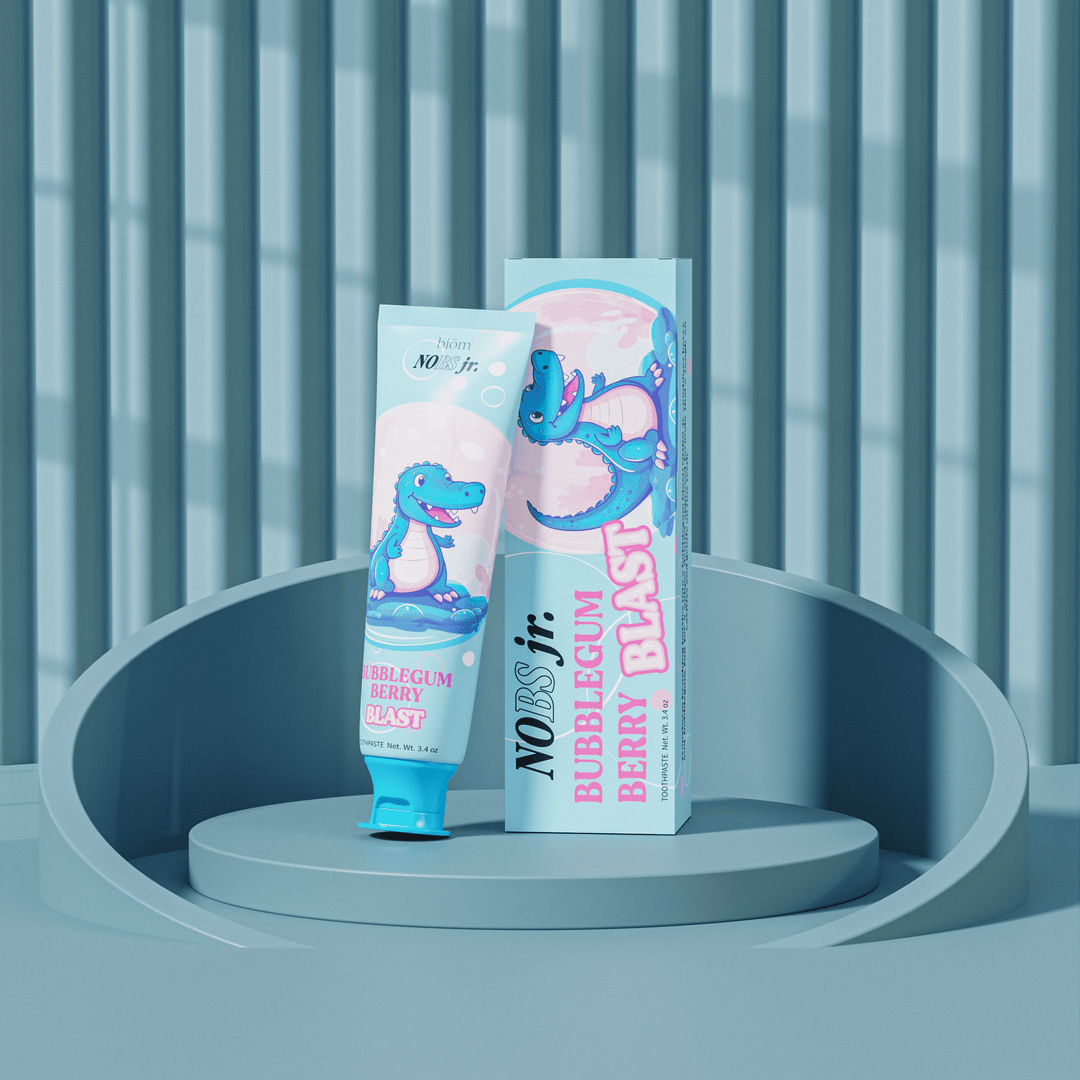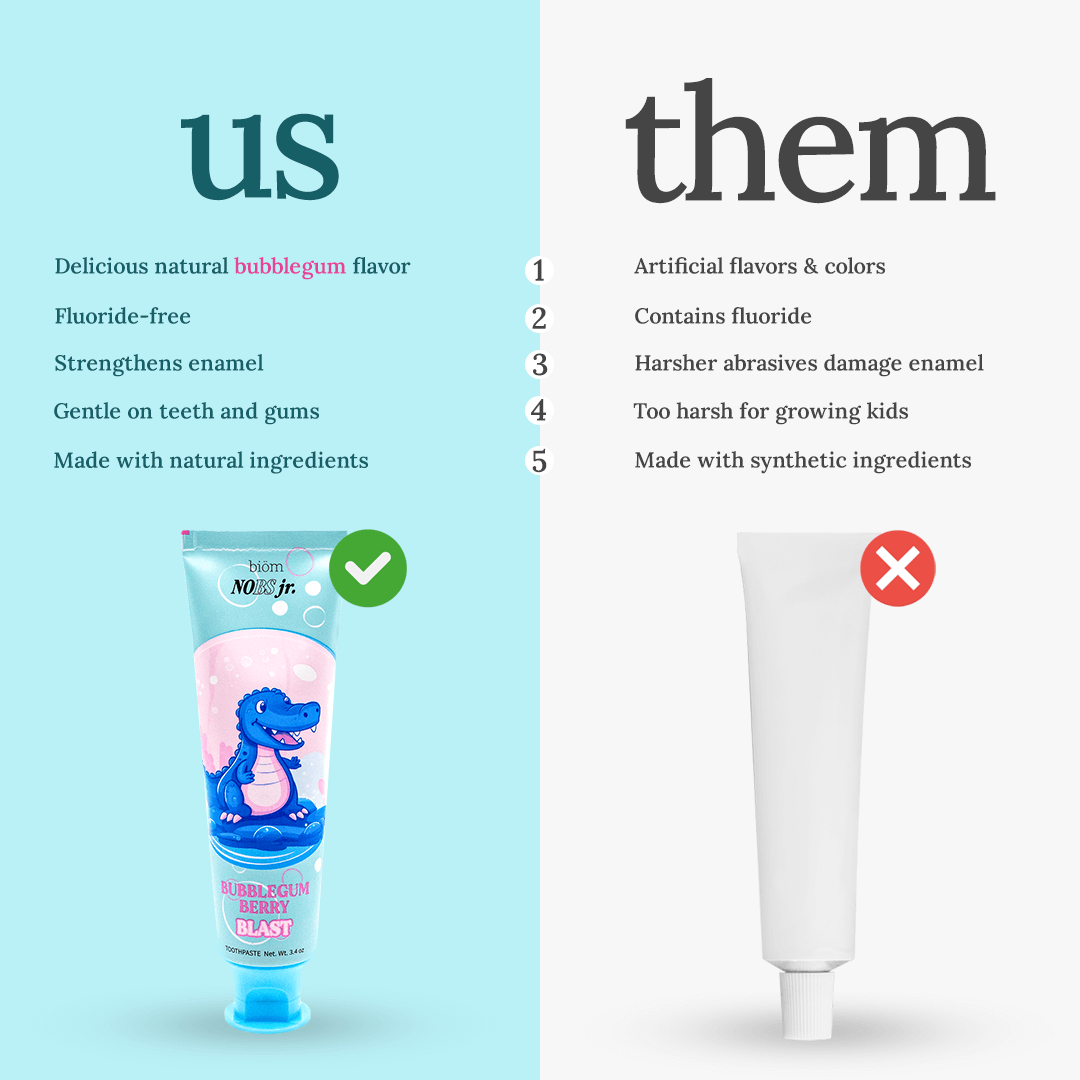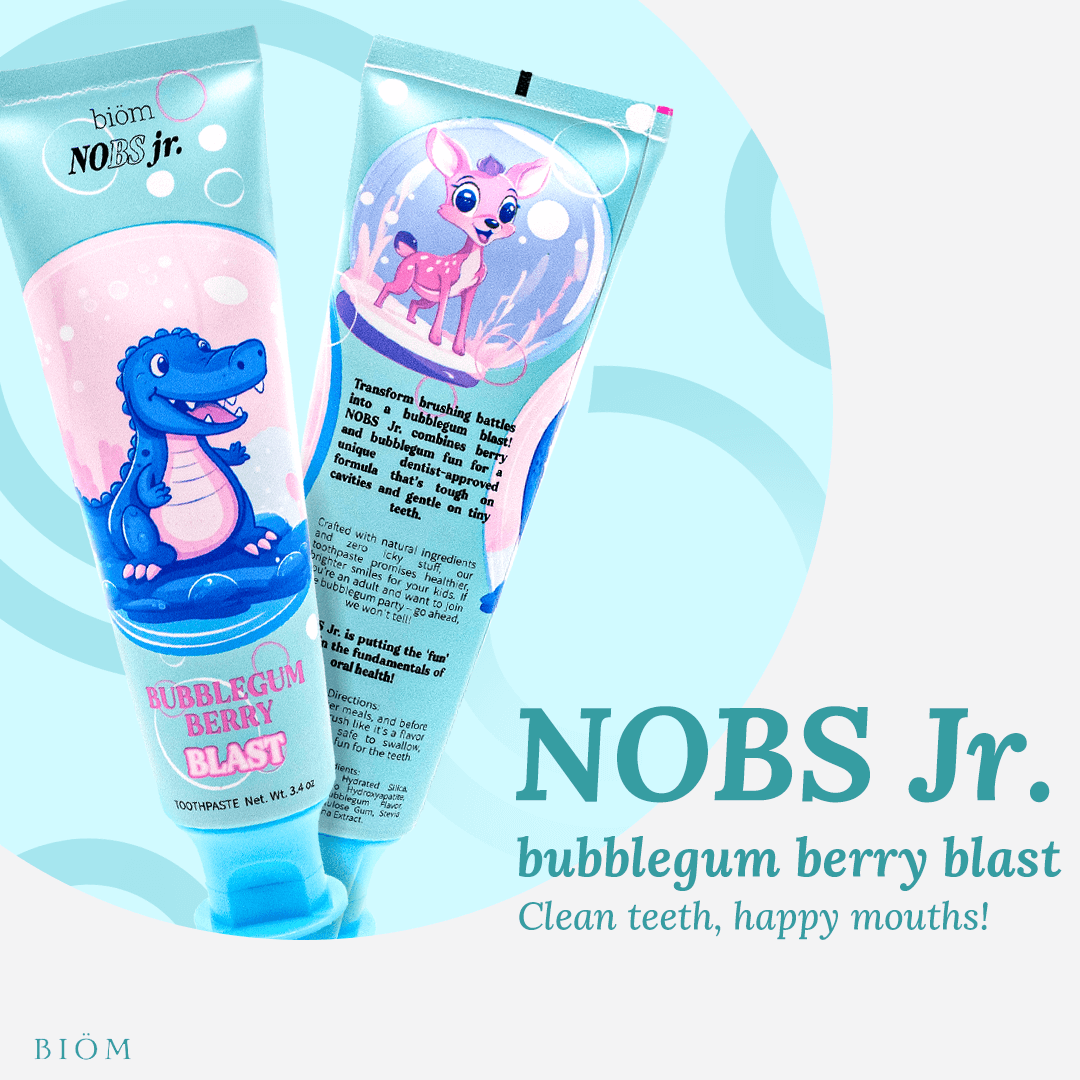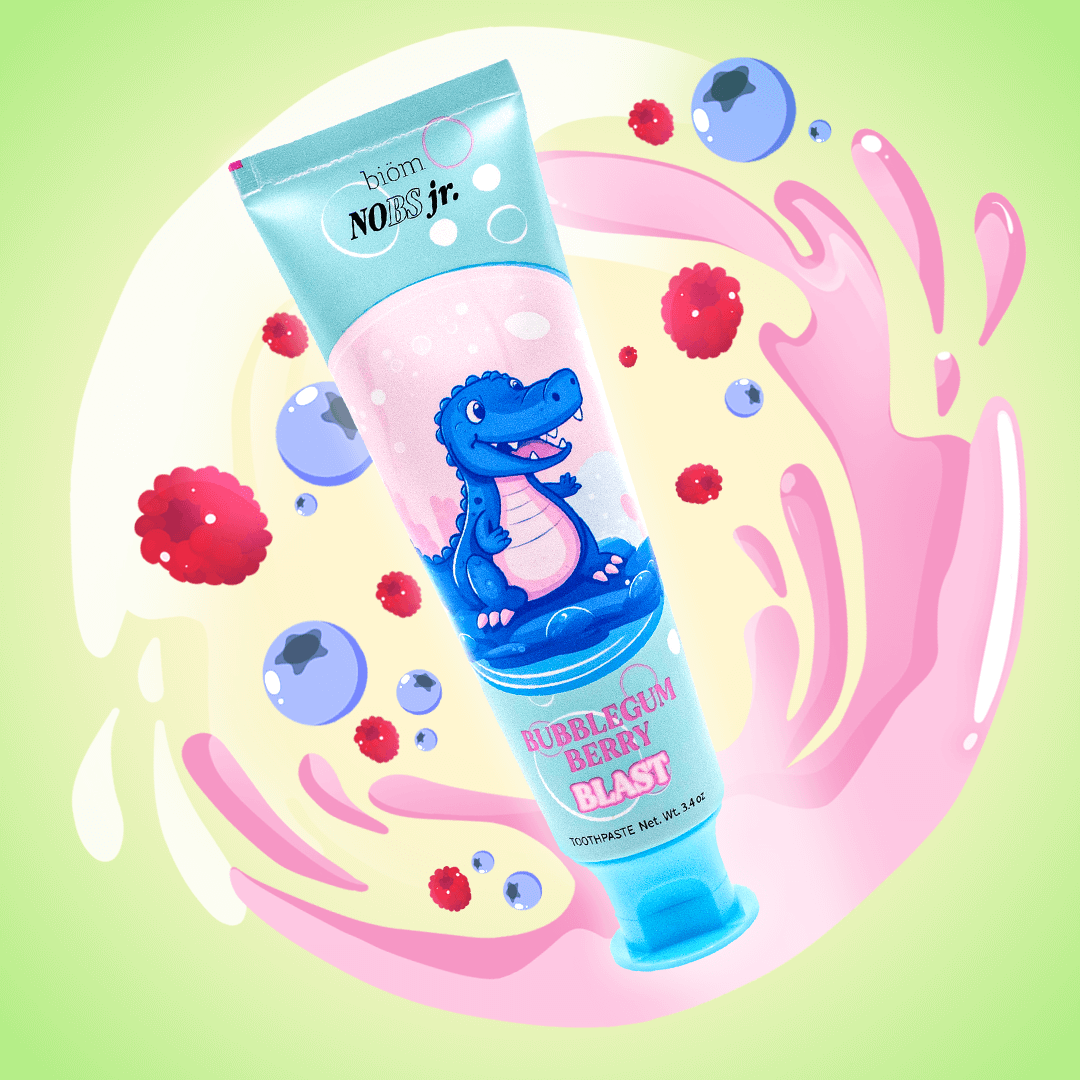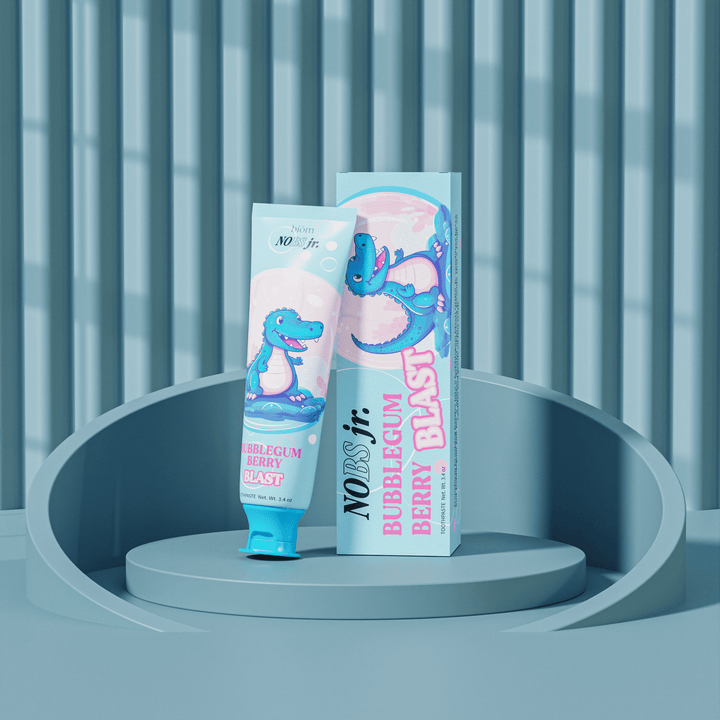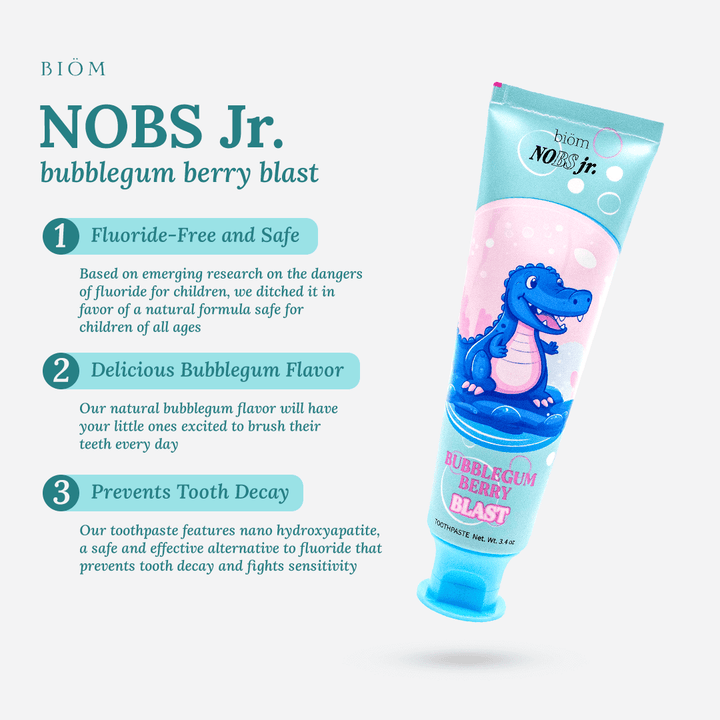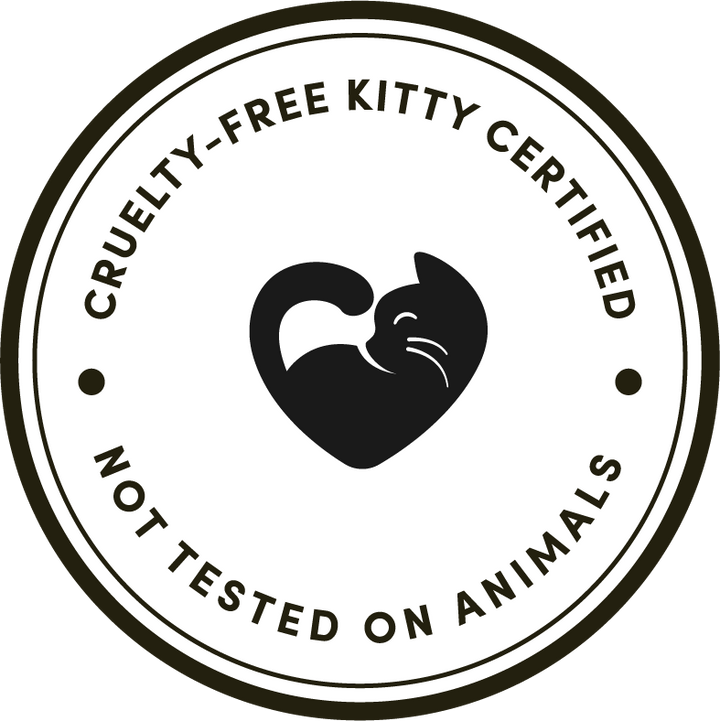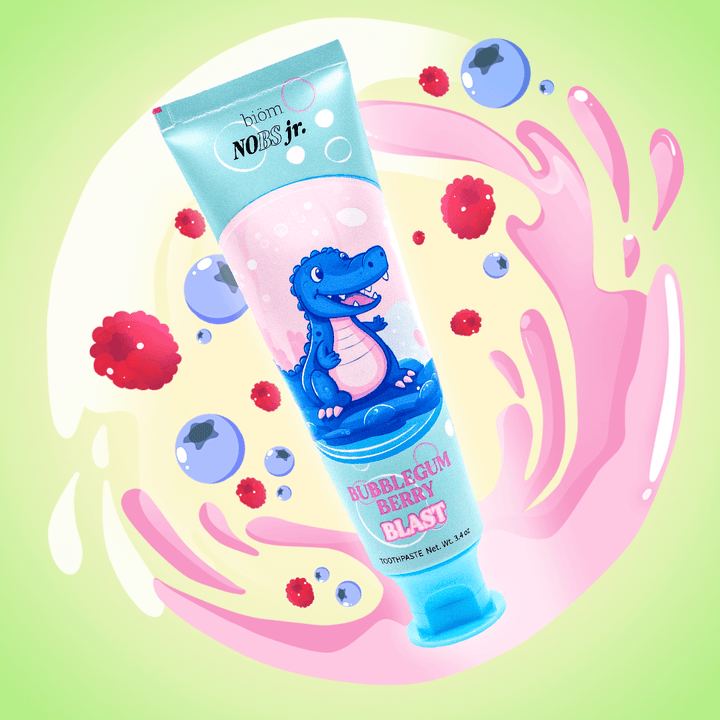When Should You Start Brushing Baby Teeth with Toothpaste?
Once your baby's teeth start emerging, it is safe to start brushing them. Typically, this occurs around the one-year mark.
However, there are different schools of thought; some dentists even advise waiting until age 2 or 3.
So, what's the right approach for your baby's oral health?
In this article, we'll examine the evidence and explain everything you need to know about when to start brushing baby teeth with toothpaste.
Brushing Without Toothpaste First

Historically, pediatric dentists and the American Association of Pediatric Dentists have recommended that parents use water to brush their baby's teeth until around the age of 2.
The rationale was to prevent children from swallowing too much fluoride before they could safely and reliably spit it out. This is because consuming excess fluoride has been associated with negative side effects, especially while a child's teeth are still developing.
Thankfully, newer technologies in pediatric dentistry have led to the emergence of nano hydroxyapatite as a safer alternative remineralizing agent to fluoride toothpaste.
Now, some dentists approve the use of fluoride-free toothpaste on your baby's gums and teeth to build healthy habits and prevent tooth decay. Of course, cleaning newborn tongue is a different concern that brushing children's teeth, and it does not require toothpaste.
Potential Benefits of Earlier Toothpaste Use

There are a few advantages to brushing your baby's teeth with toothpaste, such as:
-
Strengthening enamel on erupting teeth
-
Reducing the risk of dental caries once teeth emerge
-
Introducing healthy oral hygiene habits and skills at an earlier age
That being said, parental supervision and proper technique are key when you begin brushing baby teeth.
Toothpaste Considerations and Precautions

Getting ready to brush baby teeth for the first time?
Here are some important considerations:
-
Use a small amount of toothpaste for kids under 3 - they can graduate to a pea-sized amount when they're ready
-
Choose a fluoride-free children’s toothpaste or toothpaste with low (500ppm) fluoride
-
Closely monitor brushing to ensure they don't swallow any excess paste.
-
Gradually phase in toothpaste from 6 months up to age 2
Further, be wary that the adult toothpaste you use to brush your own teeth may not be suitable for your baby's teeth.
If you'd like to use the same toothpaste for the whole family, note that adults can use kids' toothpaste safely.
Signs Your Child is Ready for Toothpaste

There are some key indicators to keep in mind when deciding if your child is ready to start brushing with nano hydroxyapatite toothpaste:
-
Teeth have started erupting from your baby's gums
-
Your child is able to actively participate in brushing motions
-
Your child has developed the ability to spit out their toothpaste instead of swallowing
-
Your baby is exhibiting early signs of tooth decay
As you monitor your baby's dental health, keep an eye out for these signs and start brushing baby's teeth accordingly.
Further, please note that even after their baby teeth begin developing, kids should not use adult toothpaste or whitening toothpaste.
Should you should brush your baby's gums?
Yes, you should brush your baby's gums even if they have not yet developed teeth.
Before your baby's first tooth even appears, their gums can be a haven for bacteria, which can lay the groundwork for future tooth decay. That's why dentists suggest cleaning your infant's gums to establish a lifetime of healthy oral habits.
To clean your baby's gums, you'll want to use a soft, damp cloth or a special infant gum brush.
Gently wipe their gums twice a day, especially after feedings and before bedtime. This not only removes food particles and bacteria but also helps your little one get used to the sensation of oral cleaning.
It's a simple yet effective way to set the stage for healthy teeth, even before they emerge.
A Step-by-Step Guide to Brushing Your Baby's Teeth

As soon as your baby's teeth start emerging, it's time to start brushing. Here's a simple, step-by-step guide to ensure you're doing it right:
-
Choose the Right Brush: You'll want to head to your local grocery store to pick out a small, soft-bristled toothbrush designed for infants. These brushes are gentle on delicate gums and emerging teeth.
-
Use a Tiny Amount of Toothpaste: For children under three, use just a smear of toothpaste, no larger than a grain of rice. This minimizes any risk if they swallow some toothpaste.
-
Gentle Brushing: Then, hold the brush at a 45-degree angle to their teeth and gently brush in small circles, covering all surfaces of their teeth. Be gentle to avoid irritation.
-
Duration and Frequency: Aim to brush for about two minutes, twice a day, typically in the morning and before bedtime after their last meal.
-
Rinsing: Once they're old enough, teach your child to spit out the toothpaste after brushing. Rinsing with water isn't necessary for very young children as the amount of toothpaste used is minimal.
-
Supervision is Key: Always supervise your child's brushing to ensure they use the correct amount of toothpaste and to help them learn proper brushing techniques.
By following these steps, you'll not only keep your baby's first teeth clean but also instill good brushing habits from the start.
What to Do if Your Baby Resists Brushing
First of all: don't panic! Encountering resistance when brushing your baby's teeth is a common challenge, but it's one that many parents face.
The key is to stay calm and patient, as your baby can pick up on your emotions. If they see that you're relaxed and a toothbrush is nothing to be afraid of, they're more likely to be cooperative.
Further, transforming tooth brushing into a playful game can also work wonders. Singing songs, making funny sounds, or inventing stories around brushing can turn a mundane task into an exciting adventure for your little one.
Plus, allowing your child to explore the toothbrush under your supervision will help them become familiar with it.

Once they're older, brushing your teeth alongside your child is another effective strategy. Children love to imitate, so when they see you brushing, they understand it's a normal and fun part of daily life.
Positive reinforcement plays a crucial role as well. Always praise your child after brushing, which encourages better cooperation in the future.
Finally, choosing a toothbrush that appeals to your child, whether it features their favorite characters or comes in bright colors, can make brushing more appealing to them.
Most importantly, consistency in your brushing routine helps establish it as a regular part of their day that they'll come to know and love. With time and consistent practice, tooth brushing can evolve from a stressful ordeal into an enjoyable and effective part of your child's daily routine.
Choosing the Right Toothbrush for Your Child
The ideal toothbrush for a toddler has soft bristles and a small head that comfortably fits in their mouth. Soft bristles are gentle on their tender gums and newly erupted teeth, preventing any discomfort or damage.
The size of the brush head is important too; it should be small enough to navigate the tiny spaces in a child's mouth, ensuring a thorough clean.
When it comes to the type of toothbrush, both manual and electric options can be effective, but the right one depends on what your child is most comfortable with.
Manual toothbrushes can be more difficult to manipulate for children, but electric toothbrush may be too loud for them. On the other hand, electric toothbrushes are more effective than manual toothbrushes, so you may want to go that route from the beginning.
Ultimately, the best toothbrush is one that your child will use regularly and effectively.
Just Remember, Proper Brushing Technique is Key
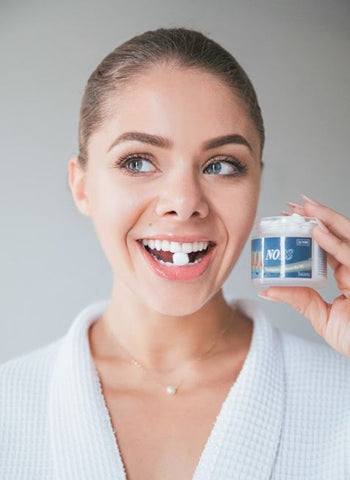
Whether you're using toothpaste or not, it's essential to maintain proper brushing technique and use the right dentifrice.
For example, using gentle pressure and a soft-bristled toothbrush can protect your baby's mouth as its teeth begin to emerge.
When in Doubt, Visit Your Pediatric Dentist

Given the varying range of opinions on proper brushing age, it may be wise to consult your local pediatric dentist.
Be sure to schedule your baby's first visit around their first birthday or when their first tooth erupts.
At this time, your dentist will be able to factor in your child's oral development and motor skills to help you decide when the right time to start brushing is.
Summary: When to Start Brushing Your Child's Teeth

As research evolves, most dentists suggest beginning brushing your baby's teeth with fluoride-free toothpaste or no toothpaste at all between ages 1 to 3.
This timeline can vary among children and is highly dependent on when the first baby tooth erupts and the baby's ability to spit out their toothpaste.
When in doubt, you can always consult your local pediatric dentist to determine the right time to introduce brushing.
Further, a kids toothpaste made with fun, natural flavors can improve your child's brushing experience.
Overall, creating a fun, consistent routine and setting your child up with proper oral hygiene habits will serve them well throughout life.
Frequently Asked Questions
When can children start using adult toothpaste?
Children can start using adult toothpaste when they can safely chew and swallow small objects on their own. Typically, this is around the time their permanent teeth come in, usually between ages 6-8. Always supervise them during brushing.
Should you brush baby's teeth before or after milk?
It's best to wait a little while after your baby has had milk before brushing their teeth. Brushing before or after is fine, but waiting helps avoid potential enamel damage from any lingering sugars in the milk.
When should a baby child first go to the dentist? Why?
A baby should see a dentist once their first tooth erupts. Early dental visits help monitor oral health, identify potential issues, and establish good oral hygiene habits, setting the foundation for a lifetime of healthy teeth.
What happens if I don't clean my baby's mouth?
If you don't clean your baby's mouth, bacteria can build up, leading to tooth decay and gum problems. Cleaning their mouth, even before teeth come in, helps maintain oral health.
What happens if my kids swallow toothpaste?
Swallowing a small amount of toothpaste is generally safe, but it's important to teach kids to spit out excess. If large amounts are swallowed, it can lead to an upset stomach. Always use a pea-sized amount for young children and supervise brushing to minimize swallowing.
Can babies use adult toothpaste?
No, babies should not use adult toothpaste because it contains higher levels of fluoride, which can be harmful if ingested in large amounts. Instead, use a fluoride-free toothpaste specifically designed for infants and toddlers. These toothpastes are safer and help establish good oral hygiene habits from an early age.



